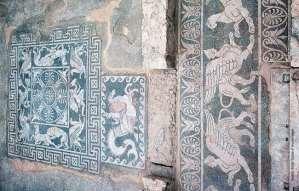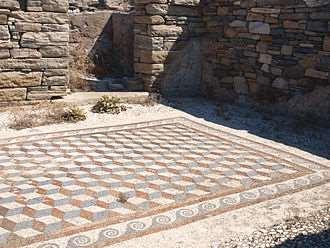
3 minute read
From Colour to Colourless: A transformation of imageability in Greek Civilization built-form
from From Colour to Colourless: A transformation of imageability in Greek Civilization built-form
by Shikha Mehta
From Colour to Colour-less
A transformation of imageability through built-form in Greek Civilization
Advertisement
Shikha Mehta Faculty of Design, CEPT University
ABSTRACT
Contrary to popular belief Ancient Greek Civilization has a rich history of polychromy. Polychromy is the use of coloured metals and pigments in statues, interior and exterior of built-forms. The truth of polychromy on Greco-Roman sculptures and wall-paintings was realised in the 20th century. This fact has still not been largely promoted thereby creating and maintaining the aesthetic notion of the mythical and legendary ‘white’ Greek Identity.
Greece in today’s time brings in images of pure minimal white spaces
with certain traces and materials of their regionalist style. The colour – or lack of it has become the symbol of ‘Modern’ Architecture. It now stands for purity, spirituality and utopia.
The paper studies the relevance of colour in the ancient Civilization and its evolution in time. It investigates into the factors that contributed to the transformation of Greek identity from the vividly coloured polychromy to the stark white prided look today. An enquiry into the shift of imageability –the sensory mental image of Greece from the Ancient Civilization to the 21st century has been explored with: the influence of the tourism industry, government, forced notion of patriotism, western influence and notions of racism and superiority associated with the colour white.
Keywords: Polychromy, Built-form, White, Greek Civilization
INTRODUCTION Ancient Greek Civilization
The Ancient Greek Civilization formed after the fall of the Minoans on the Island of Crete and of the Mycenaeans on Mainland Greece. It was a Civilization formed of multiple city-states, later called ‘polis’. These independent states were formed in 500 BC due to the hilly terrain of Greece, wherein the people settled within different valleys and hence were distributed. Further contributing to it was the dependency of the people to the sea for livelihood as the farmable land was low and lacking. Hence the ‘polis’ developed in number facing the seas with a port for trading, farmlands around the walled cities, built-forms built within the hills, temples or ‘tholos’ within and a central ‘agora’ or a market. As the ‘Greek School of Thought’ and importance of drama and philosophy grew, each citystate had a theatre and an acropolis built within the folds of the mountains as a natural structural base.
serpentinite, cinnabar, orpiment, jarosite, madder lake, murex purple, and lead white. ” Delian wall paintings saw the use of several pigments to produce many colours.
Image 3, Image 4 – Painted model of archer from the west pediment of temple of Aphaia – Colour Reconstruction
FLOOR
(5th Century BC – 1st Century BC)
Floor mosaics had an integral connection to the purpose of maintainable water-resistant flooring and to the architecture of the built-form they decorated. Complex mosaics on private house floors in
4th Century BC are found to have used coloured tesserae
and pigments of Egyptian blue, carbon black and hematite on lime bedding for their guided placement.
The earliest mosaics in Greece were made of smooth natural black and white pebbles which were set in a bed of lime‐based plaster. Basic ornamental motifs on the floors were floral, vegetal element and concentric circles. As Kanetaki, Elena states, “More complex figural compositions decorate mosaic central panels, the finest examples of which are from the house of the Mosaics at Eretria (370 BC) and the Villa of Good Fortune at Olynthus.”
Image 5: Floor Mosaics at a house in Eretria


Image 6: House at Delos-Cubic Mosaic

